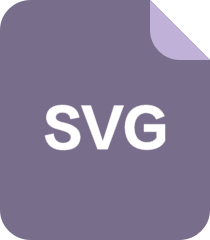Bootstrap 3入门项目实操:快速掌握Bootstrap3
需积分: 10 180 浏览量
更新于2024-11-15
收藏 293KB ZIP 举报
Bootstrap 是一个流行的前端框架,由 Twitter 的开发者团队创建和维护。Bootstrap 3 是该框架的一个重要版本,它在简化网站开发流程和增强响应式设计方面发挥了重要作用。此入门项目提供了学习和实践Bootstrap 3的平台,适合前端开发者和设计者使用。
### HTML 基础知识
HTML(超文本标记语言)是用于创建网页的标准标记语言。Bootstrap 3 项目主要基于HTML来构建界面,并通过引入一些额外的类和结构来实现设计和布局。以下是一些HTML的基础知识点,对于理解和使用Bootstrap 3至关重要:
- **HTML标签**:HTML文档由标签构成,标签是定义网页结构的标记,例如 `<html>`, `<head>`, `<title>`, `<body>` 等。Bootstrap 3使用这些基本标签,并加入自定义的类来实现复杂的布局和设计。
- **CSS类和ID**:CSS类用于定义HTML元素的样式,ID用于区分文档中的唯一元素。Bootstrap 3广泛使用预定义的类来控制元素的外观和行为。
- **响应式网页设计**:响应式设计允许网页能够自适应不同屏幕尺寸和设备。Bootstrap 3的核心优势之一就是它的响应式设计功能,它使用媒体查询和栅格系统来创建适合不同屏幕的布局。
### Bootstrap 3 的核心特性
Bootstrap 3作为一个前端框架,提供了一套完整的CSS样式和JavaScript插件,使得开发者能够快速地进行响应式网页设计。以下是Bootstrap 3的一些核心特性:
- **栅格系统**:Bootstrap 3引入了一个灵活的12列网格系统,允许开发者创建复杂的响应式布局。这可以通过在一个`.container`内使用`.row`和`.col-xs-*`等类来实现。
- **预定义样式**:提供了一套丰富的预定义样式,包括按钮、表单、表格、图片等元素的样式,这大大减少了开发者编写自定义CSS的时间。
- **组件**:Bootstrap 3还包含了许多预制的组件,如导航条、轮播图、模态框、警告框等,这些组件都是响应式的,可以直接在项目中使用。
- **JavaScript插件**:为了增强网页的交互性,Bootstrap 3还包含了一组JavaScript插件。这些插件依赖于jQuery库,并且通常与Bootstrap的CSS一起使用以实现最佳效果。
### 入门项目实践
在本入门项目中,参与者可以通过以下步骤来实践Bootstrap 3的使用:
1. **项目结构理解**:首先,应该熟悉项目的基本结构,了解不同文件的作用和如何组织项目资源。
2. **HTML文件编写**:创建基本的HTML文件,并引入Bootstrap 3的CSS和JavaScript文件。可以通过CDN链接或下载到本地来引入Bootstrap。
3. **栅格布局实践**:利用Bootstrap的栅格系统,创建一个响应式的页面布局。尝试在不同屏幕尺寸下查看页面效果,确保布局能够适应各种显示环境。
4. **组件和插件应用**:尝试在页面中添加Bootstrap提供的组件,如导航栏、分页、模态框等,并通过JavaScript插件实现一些动态功能。
5. **自定义样式和行为**:虽然Bootstrap提供了一套现成的样式和组件,但很多时候仍需要根据具体需求进行定制。学习如何覆盖Bootstrap的默认样式,并编写必要的JavaScript代码以增加个性化功能。
6. **测试和调试**:在开发过程中,不断测试页面在不同浏览器和设备上的表现,并进行必要的调试和优化。
通过以上步骤,开发者可以掌握Bootstrap 3的基本使用方法,并能够在实际项目中实现响应式网页设计。这个入门项目为初学者提供了一个很好的起点,让他们能够快速上手并深入理解Bootstrap 3的强大功能。
255 浏览量
2021-05-01 上传
2021-06-05 上传
172 浏览量
2021-04-27 上传
122 浏览量
208 浏览量
leeloodeng
- 粉丝: 27
最新资源
- C语言模拟时钟程序实现
- DirectX 9.0入门:3D游戏编程基础
- GCC中文手册 - GNU C/C++编译器指南
- Linux高级路由与流量控制:IPROUTE2详解
- Keil与Proteus联合仿真教程:单片机与嵌入式系统模拟
- Ibatis开发全攻略:入门到高级特性详解
- WebWork教程0.90版:入门与核心概念解析
- USB HID协议详解:设备类定义与固件规范
- 3D游戏编程入门:DirectX 9.0教程
- 信息技术笔试题集:涵盖网络、数据库与操作系统
- 河北工程大学科信学院在线选课系统设计说明书
- XToolsCRM企业版手册:全方位指南
- SAP Business One敏捷SDK:实战指南与核心技术
- SAP Business One 敏捷系统管理实战指南
- SAP Business One 敏捷服务详解与操作指南
- SAP Business One 中文版库存管理实战指南












